This post is based on our experience crossing the Shir Khan border from Tajikistan (Panji Poyon) to Afghanistan (Shir Khan Bandar) in December 2023.
Afghanistan is one of those places where things change all the time, so check on the security situation before you even consider going. Following this (or any) post, you should double-check on where and how you can get your visa, and if the border you’re planning to use is definitely/still open (or not).
With that in mind, if you ever wondered how to cross the Panji Poyon/Shir Khan border from Tajikistan to Afghanistan by road, then read on.
I’ve also written a story about what it was like to travel in Afghanistan.
Visas, and where to cross
Our original plan was to cross the Termez/Hairatan border from Uzbekistan to Afghanistan. In December 2023 the Afghanistan embassy in Tashkent was issuing visas, although it sounded like they might be stopping that at any time. Another caveat to check before getting a visa there: although they’ll issue it same day, they set the start date a week ahead so in other words, it takes about a week before the visa is active.
However, we also learned at the Afghan embassy that foreign nationals other than Uzbeks and Afghans, aren’t allowed to cross the border in either direction at Termez.
To sum it up, this meant waiting a week and then flying from Tashkent to Kabul. Boohoo. But wait: enter the Shir Khan Bandar crossing. While we were wracking our brains about what to do next, we thought about land border crossings in Tajikistan. We’ve previously been to the Ishkashim border in the Wakhan corridor but ruled it out for being far away and possibly inaccessible in winter. Then I remembered reading that you could cross at the Shir Khan border and they’ll actually issue you a visa on arrival.
We decided we’d just give that a go, and we traveled by a string of share taxis in one very long day from Tashkent to Dushanbe.
Update in 2025: apparently the Termez/Hairatan border is open again to any other foreign nationals as well (with a visa of course).
Before you go
Bring all the money you’re going to need for the entire time you’re in Afghanistan, in USD. There are money changers in all bigger town centers, and also in the tiny market town on the Afghan side of the border. Money changers will only accept newer currency (2013 series onwards) and that in very good shape. You can change in banks as well but rates are bad. Apparently there are ATMs in bigger cities that will accept foreign cards but I wouldn’t count on this and we didn’t see or use any.
The security situation in December 2023 seemed ok. It felt ‘safe enough’ to be there, but you should think carefully about it for yourself. The Taliban, the previous aggressor is now in control and apparently trying to run a legitimate government. You will see them patrolling the streets, some in uniform but mostly dressed in civilian (traditional Pashtun) clothing. Your government (and probably every person you know) will advise strongly against all travel to Afghanistan. Make sure that you check if your travel insurance is valid in a ‘no-go’ country.
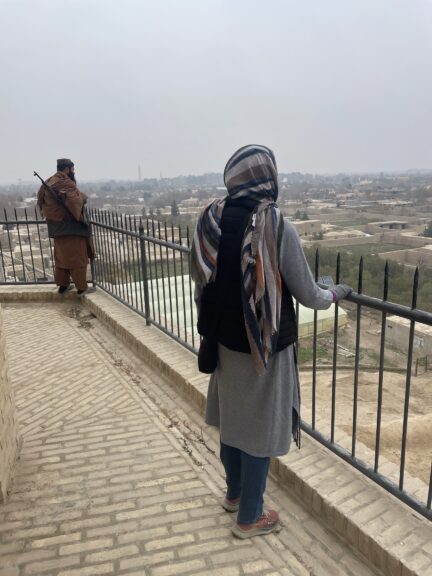
The route
Our route, by several taxis, went like this: Dushanbe > Shir Khan border > Kunduz. All up it took us about ten hours, mainly because processing the visa (and paying for it) took forever. Lots of hang-ups and waiting around.
You can take a private taxi directly or string together minibus rides from Dushanbe to the border. At the border they will transport you over the Tajikistan-Afghanistan Friendship bridge in a mandatory share taxi. After all the formalities are done at the Afghanistan side you can pick up a share taxi to Shir Khan village, then take another share taxi all the way to Kunduz, the first main town on the Afghan side.
We left Dushanbe at six am and arrived in Kunduz around four pm. The border processing took us five hours. Women need to dress very conservatively, and wear a headscarf.
Dushanbe to Panji Poyon (Tajikistan)
The border is open weekdays during the mornings and afternoons, with a lunch break. Considering you’re going to get a VOA from the Taliban, I’d get a very early start.
We took a private taxi directly from Green House Hostel in Dushanbe, to the border at Panji Poyon. The ride was around three hours and cost 800 Tajik somoni.
Or, you can take a minibus to Qurogonteppa and change onto another minibus there, to go the rest of the way to Panji Poyon. This will be cheaper but take longer.
In Dushanbe we stayed at Green House Hostel which does see travelers coming and going to/from Afghanistan, so they are a valuable source of information.
Crossing the border
Note – Tajikistan is visa free for most nationalities, but after ten days in the country you need to register with the authorities. On the Tajik side (Panji Poyon) of the border they hassled us for not having the ten day registration form. We didn’t have it because we didn’t need it, we were only in Tajikistan for five days. We had a lengthy discussion by Google Translate, including some threats about sending us all the way back to the border we entered Tajikistan at to get this form we didn’t even need to have, before they finally let it go and stamped us out. Bottom line: if you stay ten days (or more) make sure you register and bring this form with you to the border. If, like us, you don’t need it in the first place, I guess just cross your fingers you don’t meet the same belligerent and uninformed jerk we met, at the border.
Other than that, it’s the usual passport checks, customs questions, and luggage scans.
Then you go outside and wait for the mandatory shared taxi that takes you over the Tajikistan- Afghanistan Friendship bridge to the Afghan side. You need a little bit of somoni to pay for this.
On the Afghan side it’s a bit confusing – a lot of buildings, not many people, and some running around from one unmarked office to the next.
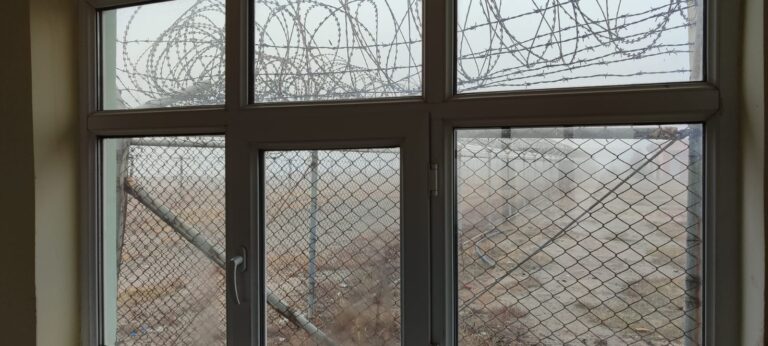
Where you get out of the car the first building is passport control and customs. You can leave your stuff here – you have to go get your visa, first. There’s a curtained ‘Ladies’ section at the back where a woman searched me and unpacked my backpack very thoroughly. No one checked Oyv’s backpack here.
After that they pointed us to a blue building behind a fence where you can obtain the Afghanistan visa. This took a long time: we filled out forms, the officer filled out forms, the officer typed everything into his computer and printed off forms. They wanted three passport photos, and took our fingerprints the good old fashioned way – blue ink pads.
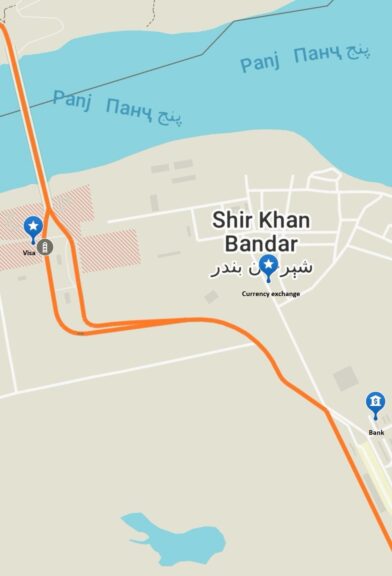
Next, they sent us to the bank to pay for the visa. It was 70 USD, only accepted in Afghani currency. So unless you happen to have 5000 afghanis, you’ll need to head into Shir Khan village to change money. And that’s how we found ourselves basically roaming passport-less around rural Afghanistan. It’s a quick 1.5 km walk to the village, many cars offered us a lift as well. On the main strip we found moneychangers easily (men sitting behind a table with stacks of currency, it’s quite obvious) and changed our dollars. Then it’s another short walk to the bank to deposit the money and get a receipt. We took the receipt back to the officer in the blue building, and the same officer did some more typing and printing, and issued our visas.
Then we took our passports and returned to the very first building (where by the way, there are some toilets). Inside the building we got our passports stamped and picked up our backpacks.
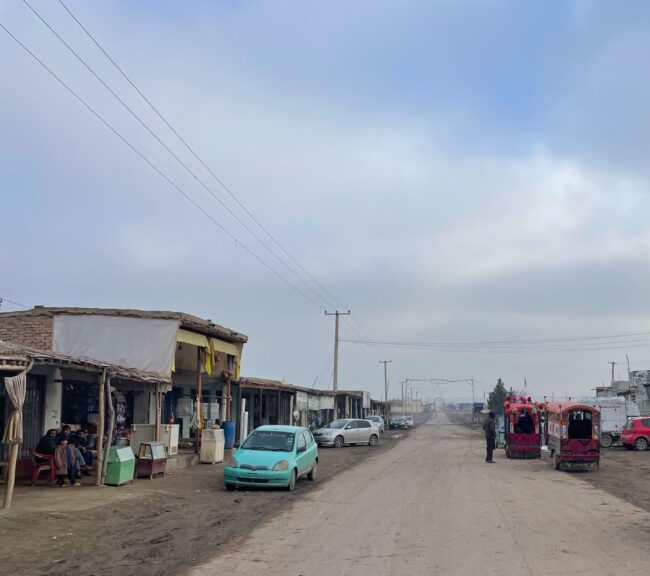
It took us around five hours to finish all the border formalities including the wandering around and banking.
Bet you didn’t think you’d end up here. Welcome to Afghanistan!
Shir Khan Bandar (Afghanistan) to Kunduz
On the way out of the clutch of administrative buildings around the border, there was one last stop where they made a very perfunctory search of Oyv’s luggage (not that he had anything to hide).
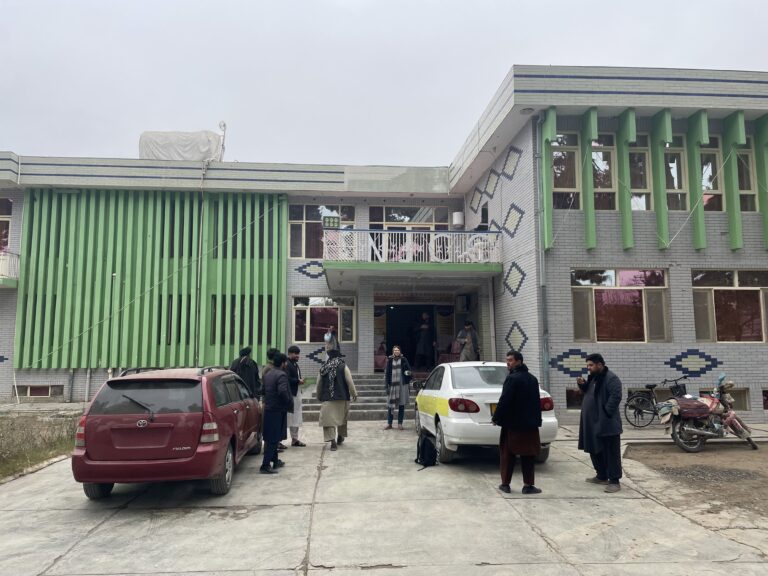
In the same spot there are taxi drivers and interested bystanders lurking around and we got a taxi to take us the 1.5 km back into Shir Khan yet again. From there shared taxis go to Kunduz, about an hour.
We stayed at Kunduz Hotel, which we’d looked up in advance on Google maps. It’s cheap and fine – constant power outages but that’s just something to get used to. There’s also a good restaurant directly across the street. Pulao for dinner while all the patrons (some of whom were armed Taliban) stared at us the whole time – also just something to get used to.
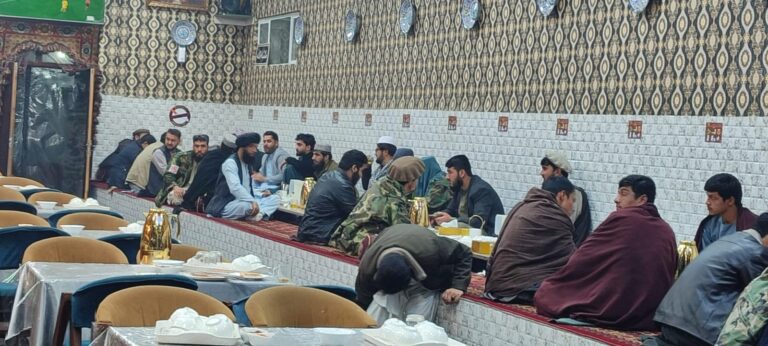
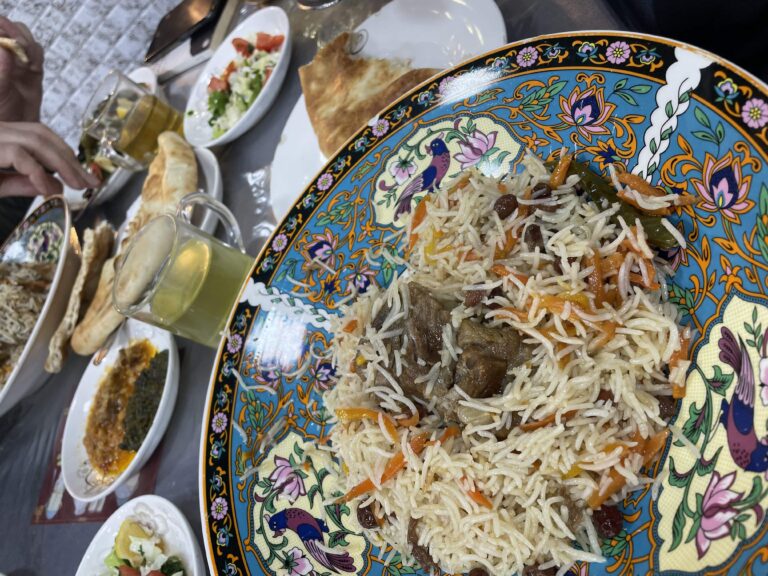
One last thing…travel permits
Once you’re in Afghanistan the issue of travel permits will come up. We never really got a straight answer as to whether they were mandatory or not – nobody seems to know, including the Taliban who issue them. The general idea is that you need them to pass checkpoints and move from one province to the next, also for entrance to certain places. The first thing we did on arrival into Kunduz, the first proper town after the border, was go to the Ministry of Information and Culture and ‘apply’ for a permit for travel to Mazar-i-Sharif. We had to pay for it and got no receipt. Later, we applied for more permits in Kabul and they were free. We did have to show these permits at a couple of checkpoints, and at the Sakhi Shrine in Kabul. Oyv needed to show it to get into the Blue Mosque in Mazar-i-Sharif (as a woman, I wasn’t allowed in there in the first place). It seemed like the Taliban is easing up about the permits, but you never know who you’re going to meet so overall I’d say just get them to be on the safe side, at least until the official line is that they aren’t necessary.
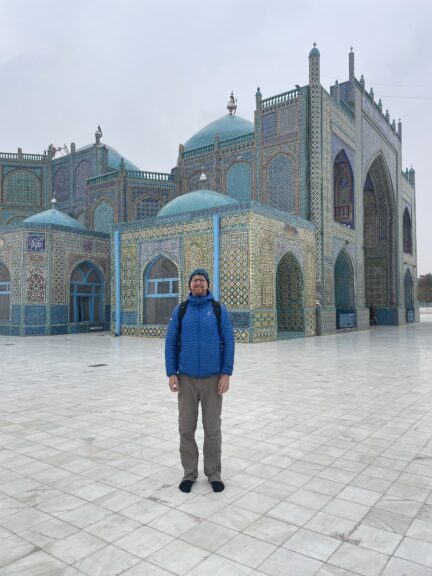
Read More
For more about travelling in these two countries and things to see and do while you’re at it, check out my stories about Tajikistan and Afghanistan.
I’ve also written a story about what it was like to travel in Afghanistan.
And, if you’re planning some travels in Central Asia on the way, take a look at this guide to a wander through Central Asia.




This Post Has One Comment
Dear i would like travel via Afghanistan to Tajikistan by road. which is most shortest way from afghanistan to tjikistan